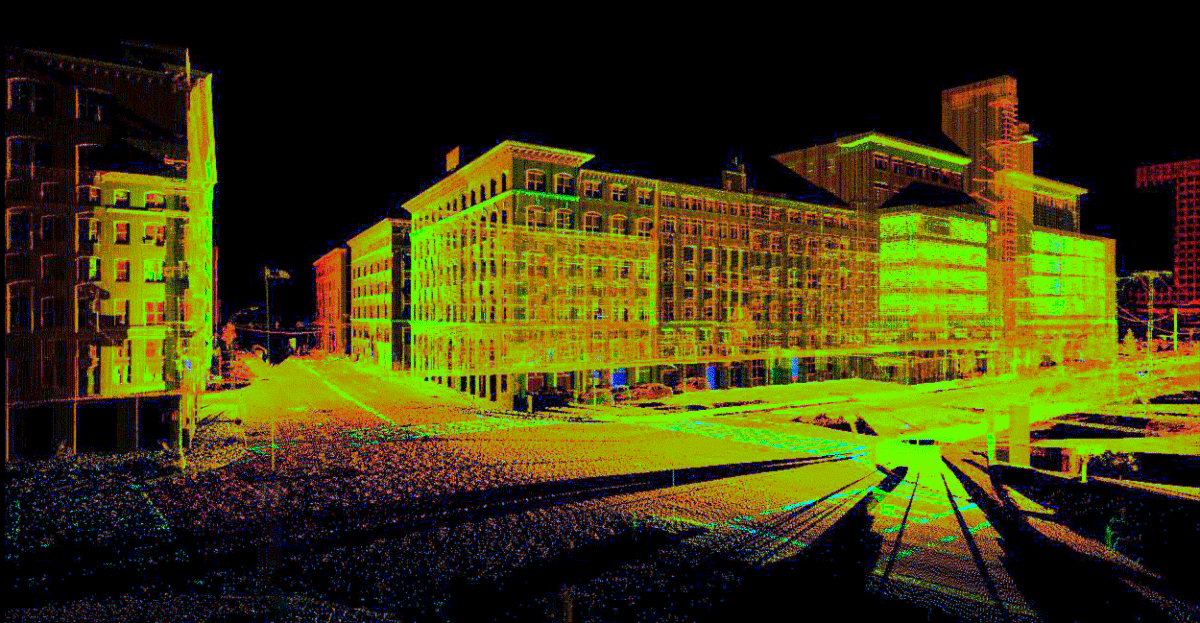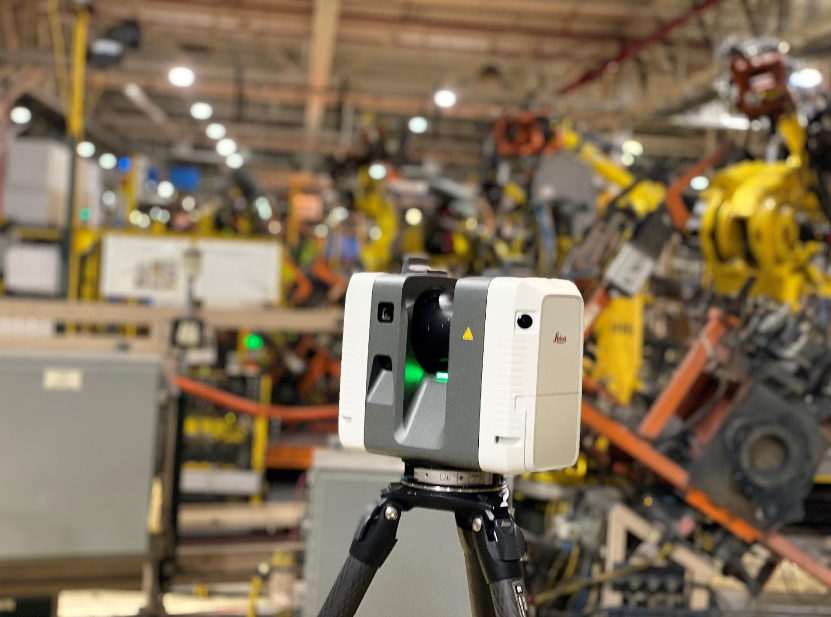Why 3D Scanning Increases Data Reliability in Construction Projects
Wiki Article
The Future of Precision Measurement: Recognizing the Role of 3D Laser Scanning Technology
The landscape of precision dimension is developing with the arrival of 3D laser scanning technology. This technology assures improved precision and performance throughout various industries. As markets begin to embrace these advancements, the implications for job management and implementation become progressively significant. Nevertheless, the transformative impacts of this modern technology expand past mere numbers and measurements, hinting at a wider shift in just how experts approach their job. What might this imply for the future?What Is 3D Laser Scanning Innovation?
3D laser scanning technology is a sophisticated method utilized to catch specific three-dimensional dimensions of physical objects and environments. This innovation makes use of laser beams to gather data factors, which are after that refined to produce detailed digital representations of the scanned subjects. By emitting countless laser pulses per second, 3D laser scanners can accurately record the form, dimension, and spatial connections of numerous surface areas.The procedure usually involves positioning the scanner at various vantage factors to catch considerable information. The resulting point cloud, a collection of numerous data factors, can be evaluated and converted right into 3D models. Applications of this innovation span multiple fields, including architecture, design, and heritage preservation, where it assists in documentation and evaluation. As a non-intrusive technique, 3D laser scanning reduces disruption to the atmosphere, allowing for comprehensive assessments of both existing frameworks and all-natural landscapes, thereby boosting understanding and facilitating notified decision-making.
Secret Perks of 3D Laser Scanning in Different Industries
3D laser scanning modern technology provides substantial advantages throughout numerous markets by offering boosted precision and precision in dimensions. This modern technology not only enhances operations however additionally causes substantial time and price savings. As organizations progressively embrace this innovative technique, the advantages end up being noticeable in boosted project results and effectiveness.Boosted Accuracy and Precision
The integration of laser scanning innovation has revolutionized the means markets come close to dimension and data collection. This technology supplies an unmatched level of accuracy, catching numerous information points in a solitary check. Because of this, professionals across different fields, such as style, production, and design, can produce extremely outlined 3D models that mirror real-world problems. Boosted precision decreases mistakes connected with traditional measurement methods, ensuring that layouts and constructions are based upon precise data. Furthermore, the capability to capture detailed information permits for far better analysis and decision-making, ultimately leading to boosted end results. By leveraging 3D laser scanning, sectors can accomplish higher criteria of top quality, making it an invaluable tool for specific measurements.Time and Price Performance
Effectiveness in time and cost is a substantial advantage supplied by laser scanning modern technology, transforming task implementation across different industries. By rapidly capturing thorough 3D data, laser scanning reduces the time invested on manual dimensions and minimizes the danger of errors. This quick information acquisition assists in faster decision-making and project timelines, permitting teams to designate sources more successfully. Additionally, the innovation lowers the need for rework, as precise designs bring about better planning and implementation. Industries such as building and construction, architecture, and producing advantage considerably, seeing lower expenses connected to labor and products. Overall, 3D laser scanning not just boosts functional efficiency but also adds to significant cost savings, making it an important device in today's competitive landscape.Applications of 3D Laser Scanning in Design and Building
As architectural and building projects grow significantly intricate, the fostering of laser scanning modern technology has actually become a transformative service. This technology offers specific measurements and detailed 3D depictions of existing frameworks, helping with more exact preparation and style processes. Architects make use of 3D laser scanning to develop digital models that record elaborate details, making certain that remodellings and new building and constructions line up perfectly with existing problems.

The Duty of 3D Laser Scanning in Manufacturing Processes
3D laser scanning plays a crucial function in making processes by boosting quality assurance via specific measurements and information collection. This technology permits manufacturers to recognize discrepancies early, lowering errors and waste. In addition, it streamlines manufacturing process by assisting in far better interaction and coordination amongst groups.Boosted High Quality Control
Quality assurance in making processes has been changed by the integration of laser scanning innovation. This ingenious strategy allows for accurate measurements and in-depth examinations of parts, ensuring that they meet strict see this high quality criteria. 3D laser scanning records detailed geometries and resistances, enabling manufacturers to discover inconsistencies from layout requirements promptly. This modern technology considerably lowers human mistake related to traditional measurement approaches, giving regular and dependable data. By facilitating real-time top quality guarantee, it allows positive modifications in the manufacturing procedure, inevitably bring about improved product reliability and consumer contentment. As sectors progressively embrace 3D laser scanning, the potential for better quality assurance ends up being apparent, marking a transformative change in producing practices.Structured Manufacturing Operations
Effective production operations are progressively taking advantage of the combination of laser scanning modern technology in producing processes. This modern technology enables for rapid, accurate dimensions of assemblies and elements, considerably lowering the time needed for setup and modifications. By capturing exact geometry, manufacturers can swiftly identify inconsistencies in between design requirements and real items, making it possible for immediate rehabilitative activities. Additionally, 3D laser scanning promotes the seamless transfer of data in between layout and production teams, boosting collaboration and minimizing mistakes. The modern technology likewise sustains electronic twin production, permitting real-time monitoring and optimization of producing procedures. Consequently, organizations can accomplish greater efficiency, decreased waste, and boosted overall efficiency, inevitably driving affordable benefit in the industry.Preserving Heritage: Just How 3D Laser Scanning Aids Cultural Preservation
As social heritage websites face the danger of damage and destruction, innovative innovations such as laser scanning arise as necessary tools for preservation efforts. 3D laser scanning records complex details of historical structures and artefacts with remarkable precision, creating electronic designs that offer multiple functions in preservation. These models allow for accurate documentation of existing conditions, enabling experts to monitor adjustments with time and examine degeneration dangers.Additionally, laser scanning facilitates digital reconstruction, assisting conservators establish prepare for fixings or recreating lost components without intrusive methods. The modern technology additionally helps in educating click here now the general public, providing immersive experiences through digital excursions that highlight the importance of these websites. By incorporating 3D laser scanning into social conservation techniques, stakeholders can ensure that heritage is protected for future generations while enhancing understanding and admiration of historical contexts.
The Future Overview: Innovations and Patterns in 3D Laser Scanning Innovation
Though 3D laser scanning innovation has actually already changed different sectors, its future pledges even better developments that will enhance precision, speed, and ease of access. Emerging patterns suggest a rise in assimilation with man-made knowledge and artificial intelligence, leading to smarter data processing and analysis abilities. This harmony will certainly make it possible for quicker decision-making and even more exact results in areas such as heritage, construction, and engineering conservation.Additionally, improvements in equipment are anticipated to generate lighter, more mobile scanning devices, democratizing access for smaller sized companies and specific specialists - 3D Scanning. As software remains to advance, straightforward applications will certainly simplify complex operations, making 3D scanning extra obtainable to non-experts
The surge of cloud-based solutions will assist in real-time cooperation and information sharing among stakeholders, leading the method for streamlined task administration. Collectively, these fads indicate a future where 3D laser scanning technology ends up being an essential tool in an even wider range of applications.
Often Asked Inquiries
Just How Much Does 3D Laser Scanning Technology Expense?

What Are the Abilities Needed to Run 3D Laser Scanners?
Running 3D laser scanners needs technological proficiency, focus to information, spatial recognition, understanding of software for information handling, and an understanding of surveying concepts. In addition, solid logical skills and problem-solving capacities are essential for effective procedure.Can 3D Laser Scanning Incorporate With Other Technologies?
Yes, 3D laser scanning can incorporate flawlessly with various other technologies, such as Geographic Information Equipment (GIS), Structure Info Modeling (BIM), and augmented fact, improving data precision and assisting in enhanced evaluation throughout various sectors and applications. - 3D ScanningWhat Is the Normal Scanning Range of These Instruments?
The normal scanning range of 3D laser scanning devices differs commonly, normally between 50 meters to over 1,000 meters, relying on the model and application, influencing their suitability for different precision measurement jobs and settings.How Lengthy Does a 3D Laser Scanning Job Take?
A 3D laser scanning task normally takes anywhere from a few hours to a number of days, depending on aspects such as project dimension, complexity, and needed detail. Each job's timeline can differ significantly based upon these elements.The landscape of precision dimension is evolving with the advent of 3D laser scanning innovation. 3D laser scanning modern technology is an innovative method utilized to catch precise three-dimensional dimensions of physical items and atmospheres. 3D laser scanning modern technology offers considerable benefits across various sectors by giving enhanced accuracy and precision in dimensions. 3D laser scanning modern technology has already transformed numerous sectors, its future promises even higher innovations that will boost ease of access, speed, and accuracy. 3D laser scanning innovation commonly sets you back in between $10,000 and $100,000, depending on the devices's capacities and attributes.
Report this wiki page